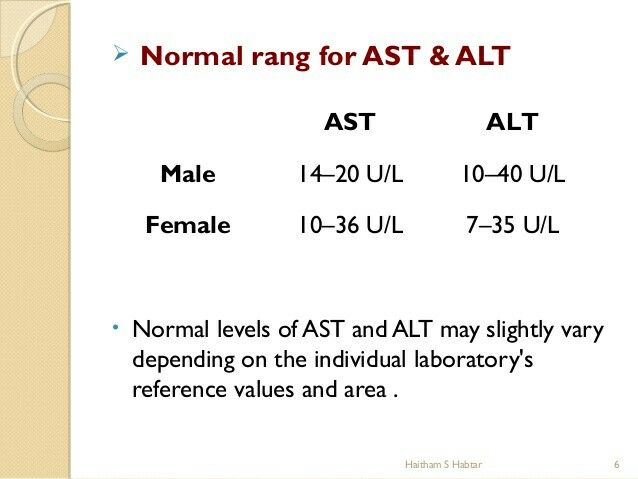AST Levels Range: Understanding High, Low, and Normal Results
What are the normal AST levels range. How do high and low AST levels affect health. What causes abnormal AST levels. How are AST levels tested and interpreted. What symptoms are associated with abnormal AST levels. How can AST levels be managed and treated.
Understanding AST: A Crucial Liver Enzyme
Aspartate aminotransferase (AST) is an enzyme found primarily in the liver, but also in other tissues such as the heart and muscles. AST levels in the blood are a key indicator of liver health and function. When liver cells are damaged or die, AST is released into the bloodstream, causing elevated levels.
AST is often measured alongside alanine aminotransferase (ALT), another liver enzyme, to assess liver health. The ratio of AST to ALT can provide valuable insights into the underlying cause of liver damage.
What is the function of AST in the body?
AST plays a crucial role in amino acid metabolism. It catalyzes the reversible transfer of an amino group from aspartate to α-ketoglutarate, forming oxaloacetate and glutamate. This process is essential for the production of energy and the synthesis of various important molecules in the body.

Normal AST Levels Range: What’s Considered Healthy?
Normal AST levels can vary slightly depending on the laboratory and the specific testing method used. However, generally accepted ranges for normal AST levels are:
- Men: 10 to 40 units per liter (U/L)
- Women: 9 to 32 units per liter (U/L)
It’s important to note that these ranges can differ based on factors such as age, gender, and overall health status. Some studies have suggested that the upper limit of normal AST levels should be lower, particularly for women and individuals with a lower body mass index (BMI).
Are there variations in normal AST levels?
Yes, normal AST levels can vary based on several factors:
- Age: AST levels may increase slightly with age
- Gender: Men typically have slightly higher AST levels than women
- Body mass: Individuals with higher BMI may have slightly elevated AST levels
- Race and ethnicity: Some studies suggest variations in AST levels among different ethnic groups
- Time of day: AST levels can fluctuate throughout the day, with slightly higher levels in the afternoon
High AST Levels: Causes and Implications
Elevated AST levels are often indicative of liver damage or disease. However, since AST is also found in other tissues, high levels can sometimes be related to issues outside the liver.
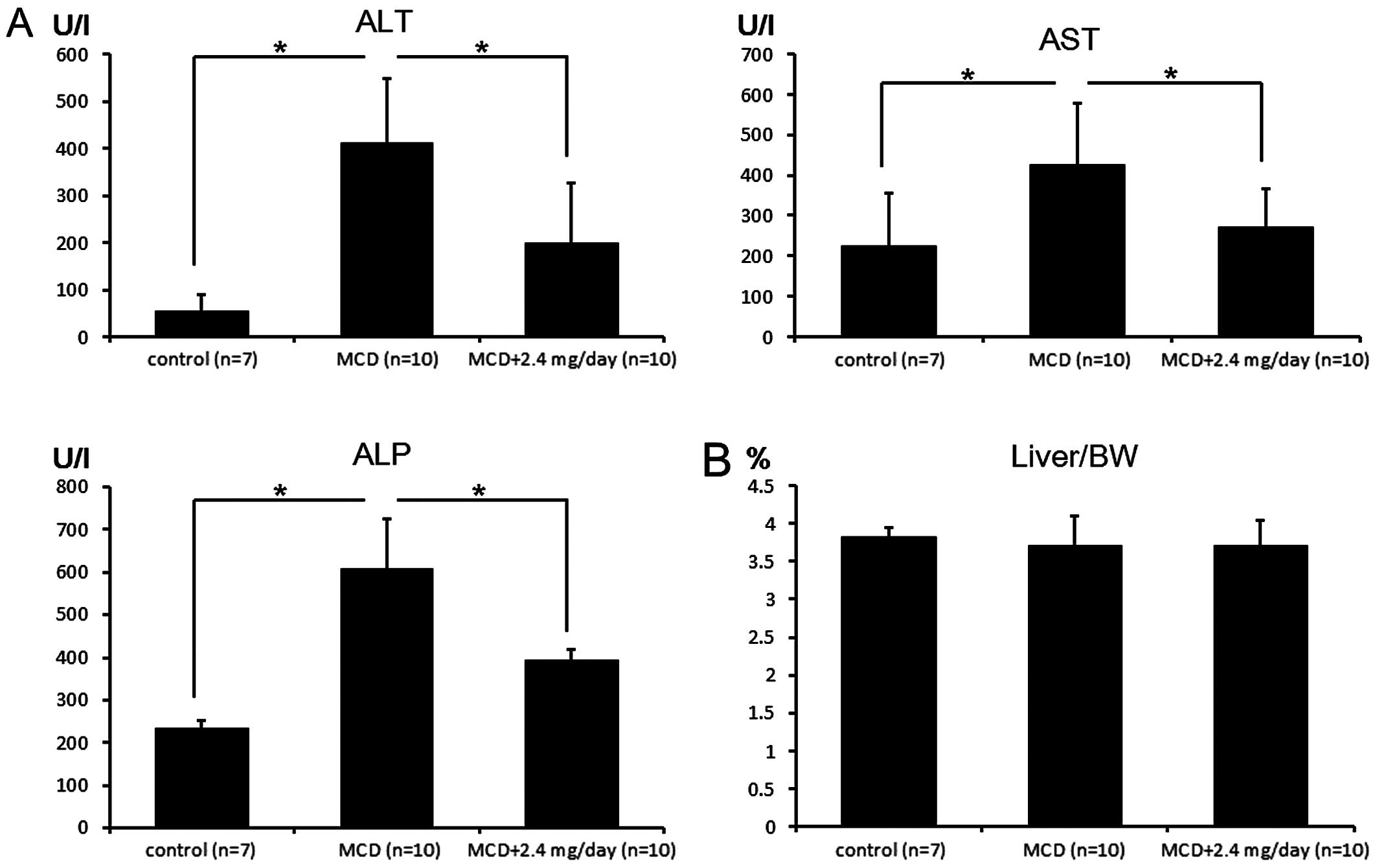
What are common causes of high AST levels?
Several conditions can lead to elevated AST levels:
- Liver diseases: Hepatitis, cirrhosis, fatty liver disease
- Alcohol abuse
- Certain medications
- Heart conditions: Heart attack, heart failure
- Muscle disorders or injuries
- Pancreatic disorders
- Thyroid disorders
- Celiac disease
- Certain cancers
How high can AST levels go?
In severe liver damage, such as acute hepatitis or drug-induced liver injury, AST levels can reach several thousand units per liter. However, the degree of elevation doesn’t always correlate directly with the severity of liver damage. In some chronic liver conditions, AST levels may be only mildly elevated or even within the normal range.
Low AST Levels: Should You Be Concerned?
While high AST levels are often a cause for concern, low AST levels are generally not considered clinically significant. In fact, AST levels below the normal range are rarely reported or discussed in medical literature.
Can AST levels be too low?
There’s no established “lower limit” for AST levels that’s considered problematic. Very low AST levels are not typically associated with any specific health conditions. However, if AST levels are significantly lower than ALT levels, it might warrant further investigation to ensure there are no underlying issues affecting liver enzyme production or release.

AST Testing: When and How It’s Done
AST testing is typically part of a comprehensive metabolic panel or liver function tests. These tests are often ordered as part of routine health check-ups or when liver problems are suspected.
How is the AST test performed?
The AST test is a simple blood test. Here’s what you can expect:
- A healthcare professional will draw a small amount of blood from a vein in your arm
- The blood sample is sent to a laboratory for analysis
- Results are usually available within a few days
No special preparation is typically required for an AST test. However, your doctor may advise you to avoid certain medications or alcohol before the test, as these can affect the results.
Interpreting AST Results: Beyond the Numbers
While the numerical value of AST levels is important, interpreting these results requires considering various factors and often looking at other test results as well.
What other factors are considered when interpreting AST results?
Healthcare providers consider several factors when interpreting AST results:

- AST to ALT ratio
- Other liver function test results
- Patient’s medical history and current symptoms
- Medications the patient is taking
- Alcohol consumption
- Recent physical activity or muscle injuries
It’s crucial to remember that a single elevated AST result doesn’t necessarily indicate liver disease. Repeated testing and comprehensive evaluation are often necessary to make an accurate diagnosis.
Symptoms Associated with Abnormal AST Levels
Abnormal AST levels themselves don’t cause symptoms. However, the underlying conditions causing elevated AST can lead to various symptoms.
What symptoms might indicate liver problems associated with high AST?
Symptoms that may accompany elevated AST levels due to liver issues include:
- Fatigue
- Nausea
- Loss of appetite
- Abdominal pain or swelling
- Jaundice (yellowing of skin and eyes)
- Dark urine
- Pale stools
- Itchy skin
It’s important to note that early liver disease often doesn’t cause noticeable symptoms, which is why regular check-ups and liver function tests are crucial for early detection and treatment.

Managing and Treating Abnormal AST Levels
The approach to managing abnormal AST levels depends on the underlying cause. Treatment is typically focused on addressing the root cause rather than the AST levels themselves.
How can lifestyle changes help manage AST levels?
In many cases, lifestyle modifications can help improve liver health and normalize AST levels:
- Limiting alcohol consumption or abstaining completely
- Maintaining a healthy weight
- Eating a balanced, liver-friendly diet
- Regular exercise
- Avoiding unnecessary medications and supplements
- Managing underlying conditions like diabetes or high cholesterol
What medical treatments are available for conditions causing high AST?
Medical treatments for conditions causing elevated AST levels vary widely depending on the specific diagnosis. Some examples include:
- Antiviral medications for viral hepatitis
- Immunosuppressants for autoimmune hepatitis
- Weight loss medications or bariatric surgery for severe obesity leading to fatty liver disease
- Medications to manage alcohol dependence
- In severe cases of liver failure, liver transplantation may be necessary
It’s crucial to work closely with healthcare providers to determine the most appropriate treatment plan based on the specific cause of elevated AST levels and individual health factors.

AST Levels in Liver Transplant Recipients
Monitoring AST levels is particularly important in liver transplant recipients, as it can help detect complications such as rejection or recurrence of liver disease.
What is the normal range of AST levels in liver transplant recipients?
The normal range of AST levels in liver transplant recipients can differ from the general population. According to studies, the following ranges are typically considered normal for liver transplant recipients:
- Early post-transplant period (first few months): Up to 3 times the upper limit of normal
- Long-term post-transplant: Similar to the general population, but may be slightly higher
It’s important to note that these ranges can vary depending on factors such as time since transplantation, immunosuppression regimen, and individual patient characteristics.
Why is monitoring AST levels crucial in liver transplant recipients?
Regular monitoring of AST levels in liver transplant recipients is essential for several reasons:

- Early detection of rejection: Sudden increases in AST levels can indicate acute rejection
- Identifying recurrence of liver disease: For example, recurrence of viral hepatitis or autoimmune liver disease
- Assessing the effectiveness of immunosuppression: Helps in adjusting medication dosages
- Detecting complications: Such as biliary obstruction or vascular issues
- Long-term graft survival monitoring: Persistent elevation of AST levels may indicate chronic rejection or other long-term complications
Liver transplant recipients typically undergo frequent liver function tests, including AST measurements, especially in the early post-transplant period. The frequency of testing may decrease over time if the patient remains stable, but lifelong monitoring is necessary.
AST Levels and Metabolic Syndrome
Recent research has highlighted the relationship between AST levels and metabolic syndrome, a cluster of conditions that increase the risk of heart disease, stroke, and type 2 diabetes.

How are AST levels related to metabolic syndrome?
Studies have shown that even mildly elevated AST levels within the “normal” range can be associated with an increased risk of metabolic syndrome and its components. Here are some key findings:
- Individuals with higher AST levels, even within the normal range, have a higher risk of developing metabolic syndrome over time
- Elevated AST levels are associated with an increased risk of type 2 diabetes, independent of other risk factors
- AST levels correlate with insulin resistance, a key feature of metabolic syndrome
- Non-alcoholic fatty liver disease (NAFLD), which is closely linked to metabolic syndrome, often presents with mildly elevated AST levels
These findings suggest that AST levels, even when not significantly elevated, may serve as an early marker for metabolic disturbances and cardiovascular risk.
What implications does this have for health screening?
The association between AST levels and metabolic syndrome has several implications for health screening and preventive medicine:

- AST levels could be used as part of a risk assessment for metabolic syndrome and type 2 diabetes
- Individuals with AST levels in the high-normal range might benefit from earlier interventions to prevent metabolic syndrome
- Lifestyle modifications, such as improved diet and increased physical activity, may be recommended for those with borderline AST levels
- More frequent monitoring of other metabolic parameters may be warranted in individuals with elevated AST levels
- The definition of “normal” AST levels may need to be reconsidered in light of these findings
It’s important to note that while these associations are significant, AST levels should always be interpreted in the context of other clinical and laboratory findings. A comprehensive approach to health assessment and risk stratification is crucial for optimal patient care.
Future Directions in AST Research and Clinical Applications
As our understanding of liver function and metabolism continues to evolve, so does the role of AST testing in clinical practice. Ongoing research is exploring new applications and interpretations of AST levels.

What are some emerging areas of research related to AST?
Several exciting areas of research are expanding our understanding of AST and its clinical applications:
- Non-invasive fibrosis assessment: Combining AST levels with other markers to accurately assess liver fibrosis without biopsy
- Personalized reference ranges: Developing individualized AST reference ranges based on factors like age, gender, and body composition
- AST in cardiovascular risk prediction: Investigating the potential of AST as a marker for cardiovascular disease risk
- AST in cancer prognosis: Exploring the role of AST levels in predicting outcomes in various cancers
- AST isoenzymes: Studying different AST isoenzymes to improve specificity in diagnosing liver disorders
How might AST testing evolve in the future?
The future of AST testing may involve several advancements:
- Point-of-care testing: Development of rapid, portable AST tests for immediate results
- Integration with artificial intelligence: Using machine learning algorithms to interpret AST results in conjunction with other health data
- Continuous monitoring: Development of wearable devices or implants for real-time AST monitoring in high-risk patients
- Genetic factors: Incorporating genetic information to improve the interpretation of AST results
- Combination biomarkers: Creating new diagnostic panels that combine AST with other novel biomarkers for improved accuracy
These advancements could lead to more precise diagnosis, better risk stratification, and more personalized treatment strategies for liver diseases and related conditions.

Range of Normal Serum Aminotransferase Levels in Liver Transplant Recipients
[1] Pratt DS, Kaplan MM. Primary care: evaluation of abnormal liver-enzyme results in asymptomatic patients. N Engl J Med
2000;342:1266–71. [PubMed] [Google Scholar]
[2] Goessling W, Massaro JM, Vasan RS, D’Agostino RB Sr, Ellison RC, Fox CS. Aminotransferase levels and 20-year risk of metabolic syndrome, diabetes, and cardiovascular disease. Gastroenterology
2008;135:1935–44. 1944.e1. [PMC free article] [PubMed] [Google Scholar]
[3] Ballestri S, Zona S, Targher G, Romagnoli D, Baldelli E, Nascimbeni F, et al.
Nonalcoholic fatty liver disease is associated with an almost twofold increased risk of incident type 2 diabetes and metabolic syndrome. Evidence from a systematic review and meta-analysis. J Gastroenterol Hepatol
2016;31:936–44. [PubMed] [Google Scholar]
[4] Sattar N, Scherbakova O, Ford I, O’Reilly DS, Stanley A, Forrest E, et al.
Elevated alanine aminotransferase predicts newonset type 2 diabetes independently of classical risk factors, metabolic syndrome, and C-reactive protein in the west of Scotland coronary prevention study. Diabetes
Diabetes
2004;53:2855–60. [PubMed] [Google Scholar]
[5] Daniel S, Ben-Menachem T, Vasudevan G, Ma CK, Blumenkehl M. Prospective evaluation of unexplained chronic liver transaminase abnormalities in asymptomatic and symptomatic patients. Am J Gastroenterol
1999;94:3010–4. [PubMed] [Google Scholar]
[6] Clark JM, Brancati FL, Diehl AM. The prevalence and etiology of elevated aminotransferase levels in the United States. Am J Gastroenterol
2003;98:960–7. [PubMed] [Google Scholar]
[7] Puoti C, Magrini A, Stati T, Rigato P, Montagnese F, Rossi P, et al.
Clinical, histological, and virological features of hepatitis C virus carriers with persistently normal or abnormal alanine transaminase levels. Hepatology
1997;26:1393–8. [PubMed] [Google Scholar]
[8] Sherman KE. Alanine aminotransferase in clinical practice. A review. Arch Intern Med
1991;151:260–5. [PubMed] [Google Scholar]
[9] Marcellin P, Lévy S, Erlinger S. Therapy of hepatitis C: patients with normal aminotransferase levels. Hepatology
Hepatology
1997;26: 133S–6S. [PubMed] [Google Scholar]
[10] ConryCantilena C, VanRaden M, Gibble J, Melpolder J, Shakil AO, Viladomiu L, et al.
Routes of infection, viremia, and liver disease in blood donors found to have hepatitis C virus infection. N Engl J Med
1996;334:1691–6. [PubMed] [Google Scholar]
[11] Zanella A, Conte D, Prati D, Mozzi F, Capelli C, Zanuso F, et al.
Hepatitis C virus RNA and liver histology in blood donors reactive to a single antigen by second-generation recombinant immunoblot assay. Hepatology
1995;21:913–7. [PubMed] [Google Scholar]
[12] Angulo P, Keach JC, Batts KP, Lindor KD. Independent predictors of liver fibrosis in patients with nonalcoholic steatohepatitis. Hepatology
1999;30:1356–62. [PubMed] [Google Scholar]
[13] Wejstål R, Hansson G, Lindholm A, Norkrans G. Persistent alanine aminotransferase elevation in healthy Swedish blood donors–mainly caused by obesity. Vox Sang
1988;55:152–6. [PubMed] [Google Scholar]
[14] Prati D, Taioli E, Zanella A, Della Torre E, Butelli S, Del Vecchio E, et al.
Updated definitions of healthy ranges for serum alanine aminotransferase levels. Ann Intern Med
2002;137:1–10. [PubMed] [Google Scholar]
[15] Siddiqui MS, Sterling RK, Luketic VA, Puri P, Stravitz RT, Bouneva I, et al.
Association between highenormal levels of alanine aminotransferase and risk factors for atherogenesis. Gastroenterology
2013;145:1271–9. e1–3. [PMC free article] [PubMed] [Google Scholar]
[16] Doycheva I, Cui J, Nguyen P, Costa EA, Hooker J, Hofflich H, et al.
Non-invasive screening of diabetics in primary care for NAFLD and advanced fibrosis by MRI and MRE. Aliment Pharmacol Ther
2016;43:83–95. [PMC free article] [PubMed] [Google Scholar]
[17] Pfitzmann R, Schwenzer J, Rayes N, Seehofer D, Neuhaus R, Nussler NC. Long-term survival and predictors of relapse after orthotopic liver transplantation for alcoholic liver disease. Liver Transpl
2007;13:197–205. [PubMed] [Google Scholar]
[18] Lucey MR, Terrault N, Ojo L, Hay JE, Neuberger J, Blumberg E, et al.
Long-term management of the successful adult liver transplant: 2012 practice guideline by the American Association for the Study of Liver Diseases and the American Society of Transplantation. Liver Transplant
2013;19:3–26. [PubMed] [Google Scholar]
[19] Pena Polanco NA, Levy C, Martin EF. Cholestatic liver diseases after liver transplant. Clin Liver Dis
2017;21:403–20. [PubMed] [Google Scholar]
[20] Levitsky J, Goldberg D, Smith AR, Mansfield SA, Gillespie BW, Merion RM, et al.
Acute rejection increases risk of graft failure and death in recent liver transplant recipients. Clin Gastroenterol Hepatol
2017;15:584–593.e2. [PMC free article] [PubMed] [Google Scholar]
[21] Russo MW. The care of the postliver transplant patient. J Clin Gastroenterol
2017;51:683–92. [PubMed] [Google Scholar]
[22] Roumilhac D, Poyet G, Sergent G, Declerck N, Karoui M, Mathurin P, et al.
Long-term results of percutaneous management for anastomotic biliary stricture after orthotopic liver transplantation.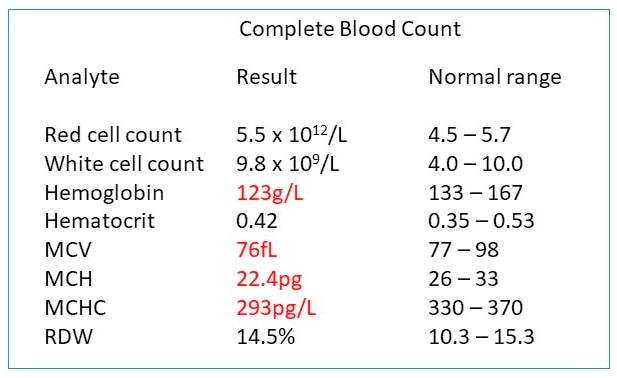 Liver Transplant
Liver Transplant
2003;9:394–400. [PubMed] [Google Scholar]
[23] Stein E, Ebeling P, Shane E. Post-transplantation osteoporosis. Endocrinol Metab Clin North Am
2007;36:937–63. [PubMed] [Google Scholar]
[24] Adams DH, Sanchez-Fueyo A, Samuel D. From immunosuppression to tolerance. J Hepatol
2015;62:S170–85. [PubMed] [Google Scholar]
[25] Guichelaar MMJ, Schmoll J, Malinchoc M, Hay JE. Fractures and avascular necrosis before and after orthotopic liver transplantation: long-term follow-up and predictive factors. Hepatology
2007;46:1198–207. [PubMed] [Google Scholar]
[26] Stravitz RT, Carl DE, Biskobing DM. Medical management of the liver transplant recipient. Clin Liver Dis
2011;15:821–43. [PubMed] [Google Scholar]
[27] Contos MJ, Cales W, Sterling RK, Luketic VA, Shiffman ML, Mills AS, et al.
Development of nonalcoholic fatty liver disease after orthotopic liver transplantation for cryptogenic cirrhosis. Liver Transpl
2001;7:363–73. [PubMed] [Google Scholar]
[28] Sterling RK, Lissen E, Clumeck N, Sola R, Correa MC, Montaner J, et al.
Development of a simple noninvasive index to predict significant fibrosis in patients with HIV/HCV coinfection. Hepatology
2006;43:1317–25. [PubMed] [Google Scholar]
[29] Siddiqui MS, Fuchs M, Idowu M, Luketic VA, Boyett S, Sargeant C, et al.
Severity of nonalcoholic fatty liver disease and progression to cirrhosis associate with atherogenic lipoprotein profile. Clin Gastroenterol Hepatol
2015;13:1000–8. [PMC free article] [PubMed] [Google Scholar]
[30] Kruger FC, Daniels CR, Kidd M, Swart G, Brundyn K, van Rensburg C, et al.
APRI: a simple bedside marker for advanced fibrosis that can avoid liver biopsy in patients with NAFLD/NASH. S Afr Med J
2011;101:477–80. [PubMed] [Google Scholar]
[31] Vuppalanchi R, Siddiqui MS, Van Natta ML, Hallinan E, Brandman D, Kowdley K, et al.
Performance characteristics of vibration-controlled transient elastography for evaluation of nonalcoholic fatty liver disease. Hepatology
2018;67:134–44. [PMC free article] [PubMed] [Google Scholar]
[32] Papatheodoridis GV, Goulis J, Christodoulou D, Manolakopoulos S, Raptopoulou M, Andrioti E, et al.
High prevalence of elevated liver enzymes in blood donors: associations with male gender and central adiposity. Eur J Gastroenterol Hepatol
2007;19:281–7. [PubMed] [Google Scholar]
[33] Haentjens P, Massaad D, Reynaert H, Peeters E, Van Meerhaeghe A, Vinken S, et al.
Identifying non-alcoholic fatty liver disease among asymptomatic overweight and obese individuals by clinical and biochemical characteristics. Acta Clin Belg
2009;64: 483–93. [PubMed] [Google Scholar]
[34] Mandayam S, Jamal MM, Morgan TR. Epidemiology of alcoholic liver disease. Semin Liver Dis
2004;24:217–32. [PubMed] [Google Scholar]
[35] Veldt BJ, Poterucha JJ, Watt KD, Wiesner RH, Hay JE, Rosen CB, et al.
Insulin resistance, serum adipokines and risk of fibrosis progression in patients transplanted for hepatitis C. Am J Transplant
2009;9:1406–13. [PubMed] [Google Scholar]
[36] Ozbay LA, Smidt K, Mortensen DM, Carstens J, Jorgensen KA, Rungby J. Cyclosporin and tacrolimus impair insulin secretion and transcriptional regulation in INS-1E beta-cells.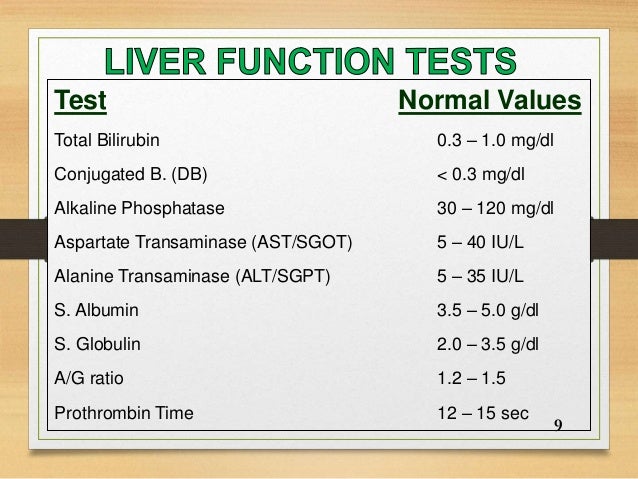 Br J Pharmacol
Br J Pharmacol
2011;162:136–46. [PMC free article] [PubMed] [Google Scholar]
[37] Bianchi G, Marchesini G, Marzocchi R, Pinna AD, Zoli M. Metabolic syndrome in liver transplantation: relation to etiology and immunosuppression. Liver Transpl
2008;14: 1648–54. [PubMed] [Google Scholar]
[38] Wong RJ, Aguilar M, Cheung R, Perumpail RB, Harrison SA, Younossi ZM, et al.
Nonalcoholic steatohepatitis is the second leading etiology of liver disease among adults awaiting liver transplantation in the United States. Gastroenterology
2015;148:547–55. [PubMed] [Google Scholar]
[39] Charlton MR, Pedersen RA, Watt KD, Heimbach JK, Dierkhsing RA. Frequency and outcomes of liver transplantation for nonalcoholic steatohepatitis in the United States. Gastroenterology
2011;141:1249–53. [PubMed] [Google Scholar]
[40] Gholam PM, Flancbaum L, Machan JT, Charney DA, Kotler DP. Nonalcoholic fatty liver disease in severely obese subjects. Am J Gastroenterol
2007;102:399–408. [PubMed] [Google Scholar]
[41] Kotlyar DS, Campbell MS, Reddy KR. Recurrence of diseases following orthotopic liver transplantation. Am J Gastroenterol
Recurrence of diseases following orthotopic liver transplantation. Am J Gastroenterol
2006;101:1370–8. [PubMed] [Google Scholar]
[42] Kleiner DE, Brunt EM, Van Natta M, Behling C, Contos MJ, Cummings OW, et al.
Design and validation of a histological scoring system for nonalcoholic fatty liver disease. Hepatology
2005;41:1313–21. [PubMed] [Google Scholar]
[43] Berenguer M, Ferrell L, Watson J, Prieto M, Kim M, Rayon M, et al.
HCV-related fibrosis progression following liver transplantation: increase in recent years. J Hepatol
2000;32: 673–84. [PubMed] [Google Scholar]
[44] Mofrad P, Contos MJ, Haque M, Sargeant C, Fisher RA, Luketic VA, et al.
Clinical and histologic spectrum of nonalcoholic fatty liver disease associated with normal ALT values. Hepatology
2003;37:1286–92. [PubMed] [Google Scholar]
[45] Bhati C, Idowu MO, Sanyal AJ, Rivera M, Driscoll C, Stravitz RT, et al.
Long term outcomes in patients undergoing liver transplantation for nonalcoholic steatohepatitis related cirrhosis.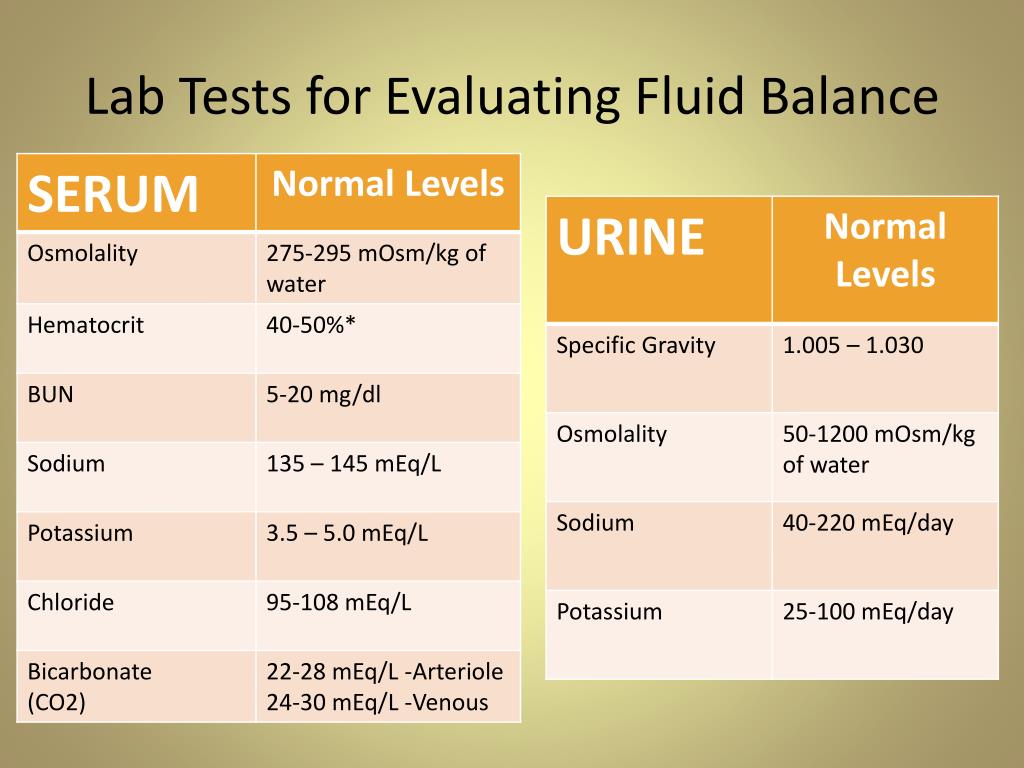 Transplantation
Transplantation
2017;101:1867–74. [PubMed] [Google Scholar]
Aspartate Aminotransferase (AST) Test (SGOT) Purpose
Aspartate aminotransferase (AST) is an enzyme that’s present in various tissues of your body. An enzyme is a protein that helps trigger chemical reactions that your body needs to function.
AST is found in the highest concentrations in your:
- liver
- muscles
- heart
- kidney
- brain
- red blood cells
A small amount of AST is typically in your bloodstream. Higher-than-typical amounts of this enzyme in your blood may be a sign of a health problem. Atypical levels can be associated with liver injury.
AST levels increase when there’s damage to the tissues and cells where the enzyme is found. AST levels can rise as soon as 6 hours after damage to tissue occurs. The typical range for AST is higher from birth to age 3 compared to the typical ranges for older children and adults.
The AST test measures the amount of AST in your blood that has been released from injured tissue.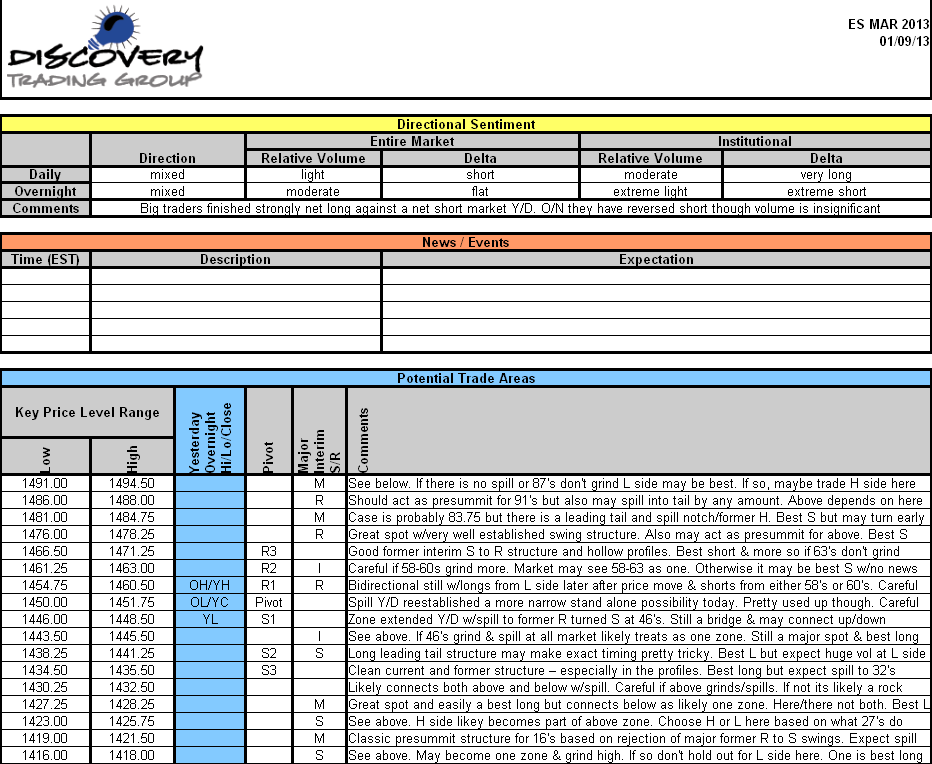 An older name for the test is serum glutamic-oxaloacetic transaminase (SGOT) test.
An older name for the test is serum glutamic-oxaloacetic transaminase (SGOT) test.
Doctors commonly use the AST test to check for liver conditions, such as hepatitis. AST is usually measured together with alanine aminotransferase (ALT). According to liver specialists, atypical ALT results are more likely related to liver injury than atypical AST results.
In fact, if AST levels are elevated and ALT levels are normal, the problem is much more likely due to a condition of the heart, muscle, kidney, or destruction of red blood cells (hemolysis) rather than the liver.
In some cases, the AST-to-ALT ratio may help your doctor diagnose certain liver diseases.
Your doctor may order an AST test for several reasons:
You’re experiencing the symptoms of liver disease
The symptoms of liver disease that may cause your doctor to order an AST test include:
- fatigue
- weakness
- a loss of appetite
- nausea
- vomiting
- swelling of your abdomen
- yellow skin or eyes, which is called jaundice
- dark urine
- severe skin itching, or pruritus
- bleeding difficulties
- abdominal pain
You’re at risk for liver conditions
Your doctor may order this test if you’re at high risk of developing liver problems. Your liver plays important roles in your body, including making proteins and removing toxins.
Your liver plays important roles in your body, including making proteins and removing toxins.
You can have mild liver damage and not show any signs or symptoms. Your doctor may order the AST test to screen you for liver inflammation or injury.
Factors that increase your risk of having liver problems include:
- exposure to viruses that cause hepatitis
- frequent alcohol or drug use
- a family history of liver disease
- diabetes
- being overweight
Your doctor wants to monitor an existing liver condition
Your doctor can use the AST test to check the status of a known liver disorder. They can use it to check the effectiveness of treatment as well.
If it’s being used to monitor liver disease, your doctor may order it periodically while you’re being treated. This will help them determine whether your treatment is working.
Your doctor wants to check that medications aren’t causing liver damage
Your doctor can use AST testing to make sure the medications you’re taking aren’t causing liver injury.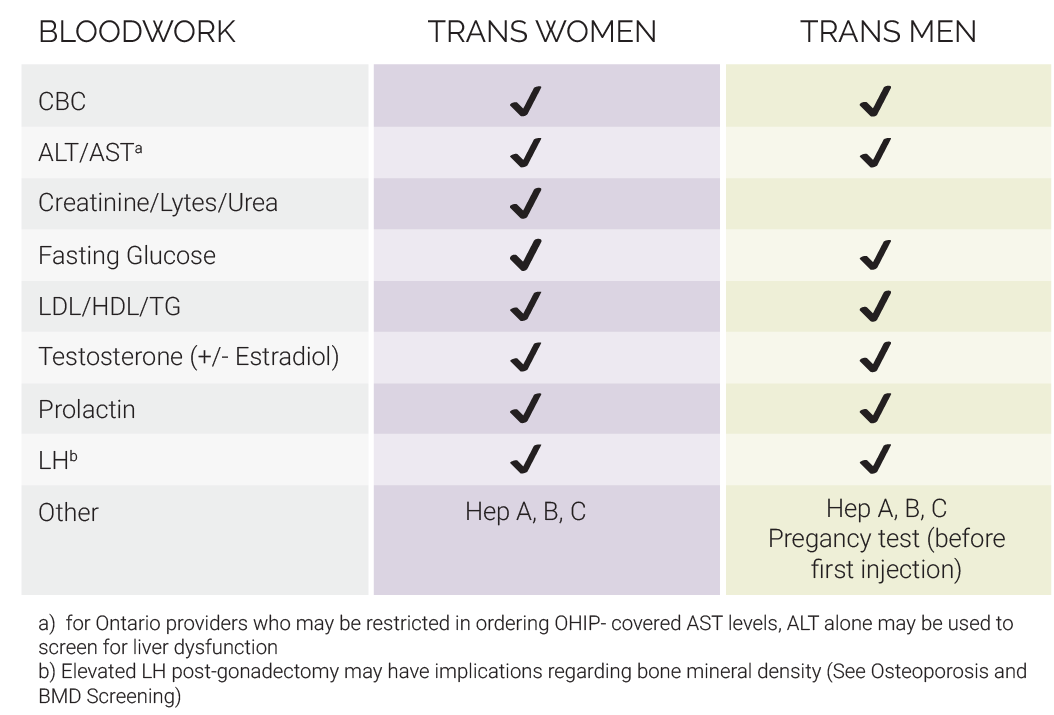 If the AST test results suggest liver damage, your doctor may need to change your medications or lower your dose to help reverse any inflammation.
If the AST test results suggest liver damage, your doctor may need to change your medications or lower your dose to help reverse any inflammation.
Your doctor wants to check if other health conditions are affecting your liver
The liver can become injured and the AST level may be atypical if you have any of these conditions:
- kidney failure
- inflammation of the pancreas, or pancreatitis
- hemochromatosis
- certain infections, such as mononucleosis
- gallbladder disease
- heatstroke
- blood system cancers, such as leukemia and lymphoma
- amyloidosis
The AST test is performed on a blood sample. A healthcare professional usually takes the sample from a vein in your arm or hand using a small needle. They collect the blood in a tube and send it to a lab for analysis. Your doctor will inform you about your results when they become available.
Although no special preparations are necessary for the AST test, you should always tell your doctor about any medications you’re taking prior to a blood draw.
The risks of the AST test are minimal. You may experience some discomfort when the blood sample is drawn. You may have pain at the puncture site during or after the test.
Other potential risks of a blood draw include:
- difficulty obtaining a sample, resulting in multiple needle sticks
- excessive bleeding at the needle site
- fainting due to the needle stick
- an accumulation of blood under your skin, or a hematoma
- an infection at the puncture site
For certain types of blood tests, you may need to fast or stop taking certain medications for several hours leading up to the test. There is usually no need for this prior to an AST test.
Drinking plenty of water before your test will make it easier for the technician to access your veins. Remember to wear a top that will allow easy access to your arms.
Make sure your doctor knows what medications you are taking when the AST test is scheduled. They will be able to give you any special instructions that might pertain to your specific needs.
AST test results vary based on the laboratory completing the analysis and the typical ranges reported. The ranges for typical levels also differ depending on sex and age.
Recent research has shown that even mild increases in AST can be a sign of a liver problem that requires further investigation. The American College of Gastroenterology recommends that all atypical AST results receive a follow-up.
AST normal range
AST results are generally measured in units per liter (U/L).
| Age | Healthy range | Atypical range |
|---|---|---|
| newborn | 47–150 U/L | 150 U/L |
| children | 9–80 U/L | 80 U/L |
| adult men | 14–20 U/L | 20 U/L |
| adult women | 10–36 U/L | 36 U/L |
Healthy AST levels have a lower maximum in adults than in newborns and children. AST levels decrease slightly during pregnancy.
On the extreme end of the spectrum, AST levels could surpass 20,000 U/L.
Possible liver conditions based on levels of AST elevation
- AST results outside of the expected range and less than 5 times the expected range:
- hepatitis B
- hepatitis C
- alcoholic and nonalcoholic fatty liver disease
- hemochromatosis
- Wilson’s disease
- autoimmune hepatitis
- alpha-1 antitrypsin deficiency
- certain medications
- AST results between 5 to 15 times the expected range:
- acute viral hepatitis
- any of the conditions related to lower levels of AST changes
- AST results that are more than 15 times the expected range:
- acetaminophen (Tylenol) poisoning
- shock liver (loss of liver blood supply)
Your doctor will speak with you about your results and what they mean. They will likely take a thorough medical history and perform a physical exam to determine if other conditions not related to the liver may be causing the atypical characteristics.
Atypical tests are often repeated to ensure the results are reproducible and accurate. Other tests are usually required to follow up atypical AST levels. These can include:
- further blood tests
- liver imaging
- liver biopsy
Some of the other conditions that cause atypical AST levels in your liver are:
- cirrhosis
- liver cancer
- autoimmune diseases
- certain genetic disorders
- liver trauma in physical injury
Other possible reasons for an increased AST level that aren’t related to the liver include:
- a recent heart attack
- strenuous activity
- an injection of medicine into your muscle
- burns
- seizures
- surgery
- celiac disease
- muscle diseases
- atypical red blood cell destruction
Levels of AST may also be elevated as a result of exposure to drugs or other substances that are toxic to your liver.
Depending on the reason for the test and your results, your doctor may recommend additional tests. If your AST test result shows elevated levels, your doctor may compare it with the results of other liver tests to help determine which form of liver disease you may have.
If your AST test result shows elevated levels, your doctor may compare it with the results of other liver tests to help determine which form of liver disease you may have.
These include tests for ALT, levels of alkaline phosphatase, albumin, and bilirubin. Blood clotting functions may also be checked. Your doctor may also recommend an ultrasound or CT scan of your liver to help identify other reasons for atypical tests.
Once you know which form of liver disease is causing the damage to your liver, you and your doctor can work together to come up with a treatment plan that meets your needs.
Universal range | Terminal blocks | Connections
text.skipToContent
text.skipToNavigation
Order template “{{name}}” was successfully created and activated.
Our versatile Klippon range
® Connect is a complete range of terminal blocks for high productivity in cabinet construction.
select category
Terminal blocks
Packing unit: 10 pieces
Packing unit: 10 pieces
Packing unit: 10 pieces
Packing unit: 10 pieces
Packing unit: 100 pieces
Packing unit: 100 pieces
Packing unit: 25 pieces
Packing unit: 25 pieces
Packing unit: 50 pieces
Packing unit: 20 Piece
Packing unit: 50 pieces
Packing unit: 10 pieces
Packing unit: 50 pieces
Packing unit: 5 pieces
Packing unit: 20 pieces
Packing unit: 100 pieces
Packing unit: 20 Piece
Packing unit: 100 pieces
Packing unit: 25 pieces
Packing unit: 20 pieces
COMPLEX “GENERAL CLINICAL” (ALT, AST, total bilirubin, glucose, total cholesterol, total protein, creatinine, urea) in Izhevsk
Alanine aminotransferase (ALT, AlAT) is synthesized intracellularly, and normally only a small part of this enzyme enters the blood. If the liver is damaged (with hepatitis, cirrhosis of the liver), this enzyme enters the bloodstream.
If the liver is damaged (with hepatitis, cirrhosis of the liver), this enzyme enters the bloodstream.
ALT levels can also rise with myocardial infarction, which is always accurately detected by tests.
An increase in ALT greater than an increase in AST is indicative of liver damage; if the AST index rises more than the ALT rises, then this, as a rule, indicates problems with myocardial cells.
An increase in ALT activity can be caused by taking certain drugs (mostly due to toxic effects on the liver).
A decrease in ALT activity in blood plasma is possible with renal failure, pyridoxine deficiency, after repeated hemodialysis procedures, during pregnancy.
Aspartate aminotransferase (AST, AsAT) is synthesized intracellularly, and normally only a small part of this enzyme enters the blood. With damage to the myocardium, the liver, this enzyme enters the bloodstream. Therefore, an adult blood test will quickly show the presence of the enzyme.+SI+units+(mmol/L)+Toxic+levels.+(mg/dL).jpg)
An increase in AST that exceeds an increase in ALT is characteristic of damage to the heart muscle; if the ALT index is higher than the AST, then this, as a rule, indicates the destruction of liver cells.
Total bilirubin is considered a product of the breakdown of myoglobin, cytochromes and hemoglobin in some cells of the spleen, liver and reticuloendothelial system. It is one of the nodal components of bile. Contains bilirubin in the form of fractions in the blood serum. Fractions can be direct (conjugated or bound) and indirect (unbound or free) bilirubin, together making up total bilirubin. The definition of direct and total bilirubin is traditionally used, which shows the amount of free bilirubin that is practically insoluble in water.
Indications for use:
- Liver diseases;
- Hemolytic anemia;
- Clinical signs of jaundice.
Glucose is considered a key indicator of active carbohydrate metabolism, and determining its actual level in the body is a mandatory step in the process of diagnosing complex diseases, such as diabetes. The indicator of glucose concentration is regulated by hormones, which is why an analysis for hormones is needed here. So, insulin, which is the main hormone in the pancreas, in case of its own deficiency, affects the increase in glucose, so the cells starve. For adults, a certain range of 3.9 is considered normal.-5.8 mmol / liter, while the indicator can increase during pregnancy or after 60 years.
The indicator of glucose concentration is regulated by hormones, which is why an analysis for hormones is needed here. So, insulin, which is the main hormone in the pancreas, in case of its own deficiency, affects the increase in glucose, so the cells starve. For adults, a certain range of 3.9 is considered normal.-5.8 mmol / liter, while the indicator can increase during pregnancy or after 60 years.
Cholesterol (cholesterol) is an organic compound and an essential component of active fat metabolism. It is used for the process of building cell membranes, participates in the actual synthesis of sex hormones and vitamin D, and is a precursor of bile in the liver.
In the blood, cholesterol can be contained in the form of total cholesterol, as well as low or high density lipoproteins. The procedure for the synthesis of cholesterol occurs in individual liver cells, it is slightly produced in the adrenal glands, skin layers and intestinal walls. Partially, cholesterol comes with all kinds of foods.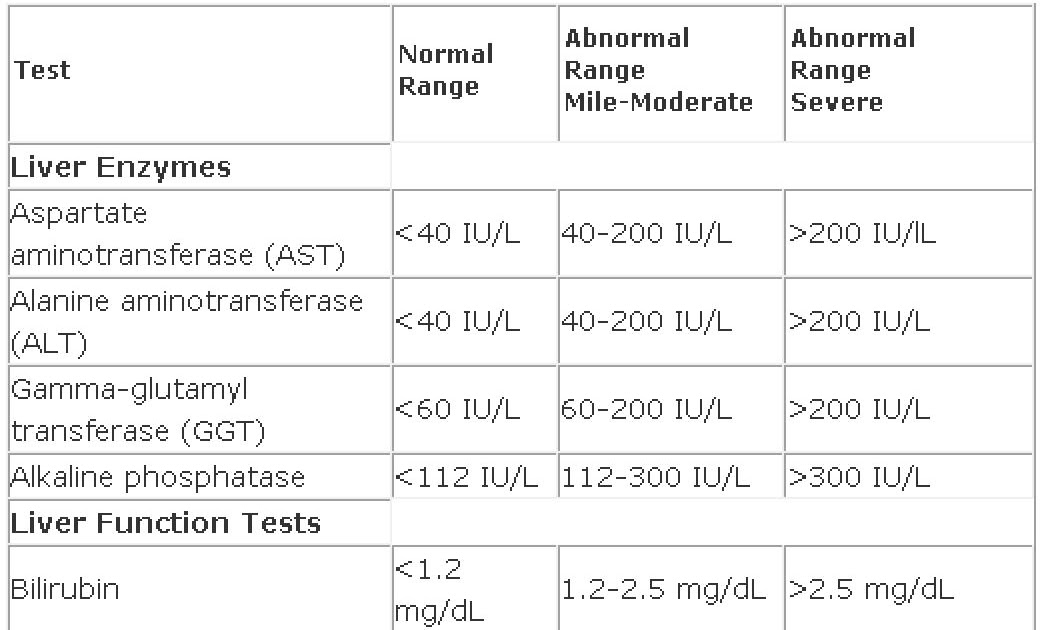 Paid blood tests will help to find out its level.
Paid blood tests will help to find out its level.
The total protein is an organic polymer composed directly of various amino acids. Proteins are involved in most biochemical reactions of the body as catalysts, are responsible for the transport of various substances and active drugs, and are also involved in providing high-quality immune protection. The generalized (total) concentration of proteins in the blood is determined by the existing concept of “total protein”.
The procedure for determining the protein index is used to diagnose a variety of diseases of the kidneys, liver and oncological diseases called a blood test for protein.
Creatinine is the end product of the breakdown of creatine, which is released during muscle contraction, transported by the blood to the kidneys and excreted from the body through the urine. Due to the fact that creatinine is excreted through the kidneys, an increase in its content in the blood is an indicator of renal failure (such an increase indicates a violation of the filtration and excretory function of the kidneys).